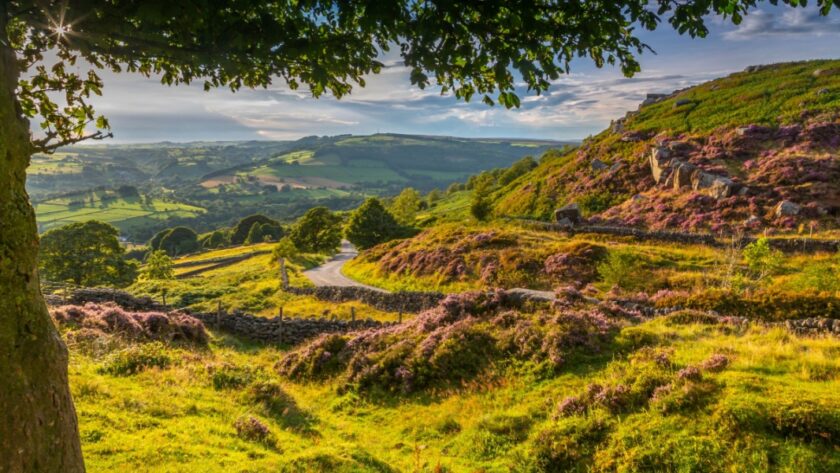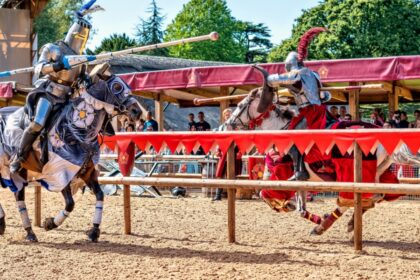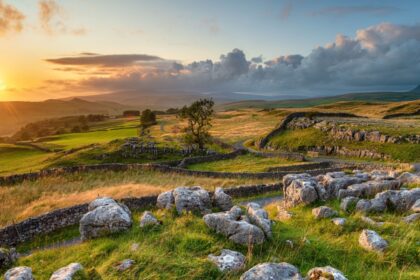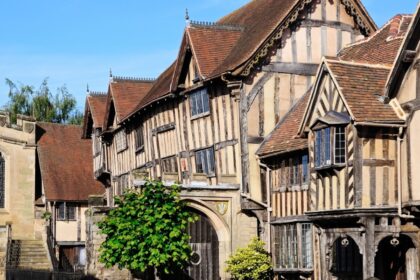Right in the middle of England, Derbyshire rises gently into the sort of landscape that makes you want to take long walks and then immediately reward yourself with tea and cake. It is a county of limestone valleys, grand country houses, handsome market towns and an awful lot of sheep, most of whom look entirely unimpressed by the scenery.
Much of it is taken up by the Peak District, Britain’s first national park, where the hills roll obligingly, the air feels cleaner, and the weather does its best to keep things interesting.
Peaks, dales and postcard villages
The Peak District is Derbyshire’s pride and joy. Technically, only part of the national park sits within the county boundaries, but it feels like Derbyshire’s back garden all the same. The landscape flips between dramatic gritstone edges in the north and softer limestone dales further south, as if the scenery could not quite decide on one style.
Villages like Castleton, Bakewell and Eyam seem perfectly arranged for visitors, complete with tea shops, walking routes and the occasional curious pheasant. Castleton comes with show caves and Peveril Castle perched high on a hill, while Bakewell contributes its famous pudding — not to be confused with a tart, though fierce debates continue.
Plague villages, stately homes and a touch of Jane Austen
Derbyshire is not short on stories. The village of Eyam famously quarantined itself during the plague of 1665, losing many of its villagers but sparing the surrounding communities. Today it stands as a rather humbling memorial to extraordinary courage.
At the grander end of things, there is Chatsworth House, which looks exactly like a stately home should: sweeping drive, enormous windows, gardens with fountains, and enough rooms to lose several visitors entirely. It has starred in several films, most notably as Mr Darcy’s house in Pride and Prejudice adaptations.
Then there is Haddon Hall, a beautifully preserved medieval manor that feels like it has quietly slipped through history without anyone disturbing it too much.
Mills, railways and a little industrial pride
Derbyshire also played its part in kicking off the Industrial Revolution. The Derwent Valley Mills are now a UNESCO World Heritage Site, where early factories harnessed water power to spin cotton and launch modern industry. You can still see the old mill buildings, canals and the worker villages that sprang up alongside them.
The county also boasts some wonderfully scenic heritage railways, where steam engines puff their way through valleys as if they never got the memo about diesel.
Caves, crags and a bit of weather
If you fancy going underground, Derbyshire has you covered. The caves around Castleton include Blue John Cavern, where the rare mineral was once mined to make ornaments for people who apparently needed slightly purple jewellery.
Above ground, walkers tackle the likes of Kinder Scout, Mam Tor and Stanage Edge, where the views stretch out across the hills and the wind does its best to remove your hat.
Where the scenery does most of the talking
Derbyshire is not loud or showy. It simply sits there, quietly offering up handsome hills, pretty villages, grand houses and enough walking trails to keep you happily occupied for days. The locals seem quite content to let the scenery do most of the talking. And after a day here, you probably will be too.





